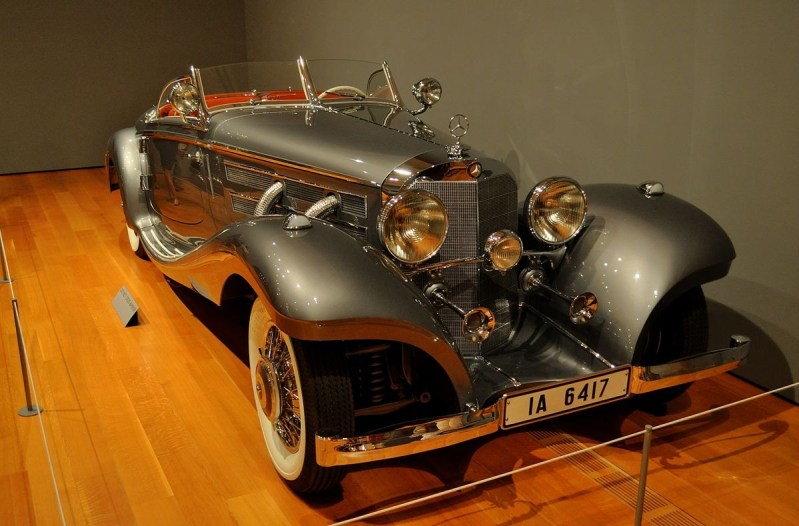While most people worry about having a hard time finding a car or about how they could afford a large dealer markup, collectors spend ludicrous amounts of money on classic cars every year.
In fact, according to Classic.com, the top 10 most expensive collector’s cars that sold at auction in 2022 represented a total of $250 million in sales. The most “affordable” car was sold at auction for $7,595,000, while the most expensive one was $146,588,400.
With this in mind, we thought exploring the world’s ten most expensive collector cars would be an excellent idea. In our article, we’ve discussed what you need to know about these ten

1954 Ferrari 375 America Vignale Cabriolet – $6,500,000 to $7,000,000
Ferrari was a much different automaker in the 1950s than it is today. The Italian marque focused much more on grand tourers back then, and the Ferrari 375 America is an excellent example. The 375 America featured a detuned version of the Lampredi engine from the 375 MM race car and arrived as a replacement for the 342 America.
It was built in meager numbers, as Ferrari only built 10 375 Americas, though two more vehicles that started as 250 Europas were converted at the factory later on. Buyers had their choice of a few coachwork upgrades from Pinin Farina and Vignale, but what makes this car so special is that it was the only vehicle to have coachwork done by Vignale and be a cabriolet.
This car’s history is also remarkable. Enzo Ferrari personally sold one of these vehicles to Bianca Colizzi, film director Giuseppe Colizzi’s daughter. In addition, this vehicle has matching numbers for its engine, gearbox, rear axle, and bodywork.
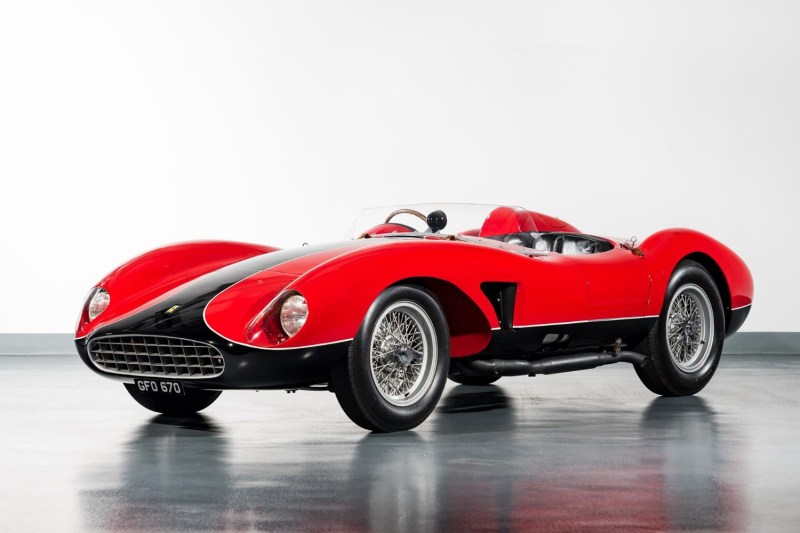
1957 Ferrari 500 TRC Spider – $8,000,000 to $10,000,000
The 1957 Ferrari 500 TRC Spider is the first race car on our list. It raced at the 1957 24 Hours of Le Mans, and between 1958 to 1959, it was driven to 12 class victories. Between 1957 and 1963, this 500 TRC Spider landed on the podium 18 times. If you’re looking to participate in the Le Mans Classic or the Mille Miglia Storica, this is the car you’ll need.
Instead of a V8 or a V12 engine, the 500 TRC Spider used one of Ferrari’s best and last 4-cylinder engines. The one in the 500 TRC Spider developed 190 horsepower, good enough for a top speed of 153 mph. This model was specifically built for privateer racers; only 19 units were built. This 500 TRC Spider is the second-to-last model constructed and has a rich history of being a successful race car.
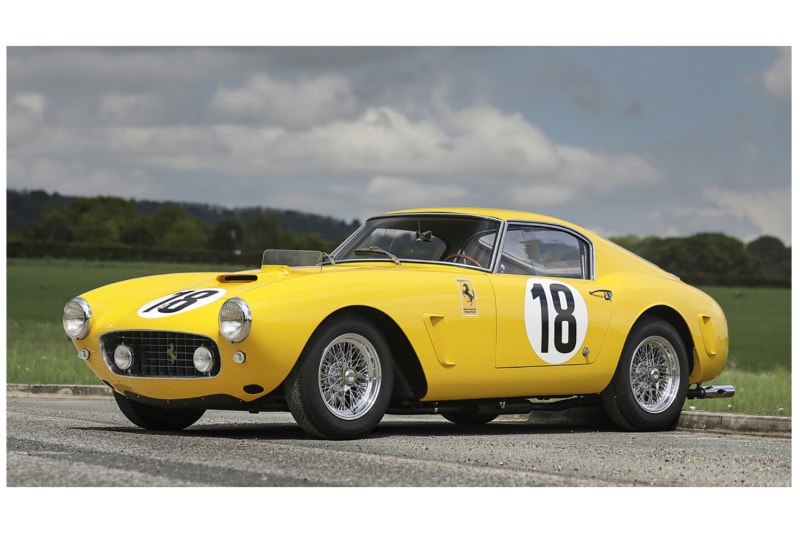
1960 Ferrari 250 GT SWB Berlinetta Competizione – $7,500,000 to $8,750,000
For a collector, a car’s racing history can be just as important as the car’s. From a racing standpoint, Ferrari’s 250 line was an important vehicle for the automaker, and the short-wheelbase (SWB) Berlinetta proved to be a mainstay for Ferrari.
The 250 GT SWB Berlinetta Competizione has gorgeous coachwork by Scagliette and wears a historical livery. Additionally, it has a record of competing at races like Le Mans and Goodwood. Ferrari historian Marcel Massini documented the vehicle’s history, which certainly adds to its appeal.

1924 Hispano-Suiza H6C “Tulipwood” Torpedo – $8,000,000 to 9,245,000
We won’t judge you if you’ve never heard of Hispano-Suiza. The brand was founded in 1904 in Barcelona and was a force in the racing world. André Dubonnet commissioned this Hispano-Suiza H6C Torpedo. After a career as a pilot in World War I and racing cars, Dubonnet set out to make what became the most famous Hispano-Suiza ever.
While the 8.0-liter is a highlight, the coachwork is spectacular. Dubonnet got aircraft manufacturer Nieuport-Astra to make the body of the 1924 Hispano-Suiza H6C “Tulipwood” Torpedo, while engineer Henri Chasseriaux formed the 1/8-inch-thick strips of mahogany that were laid over 3/4-inch ribs to create the body.
Today, a wood car would be purely for show, but in 1924, it was used to compete in the Targa Florio, where it finished in sixth place overall. Not only did the wood bodywork result in a vehicle that looked like nothing else, but it was also far lighter than traditional bodywork that would be fitted to a vehicle of this type.
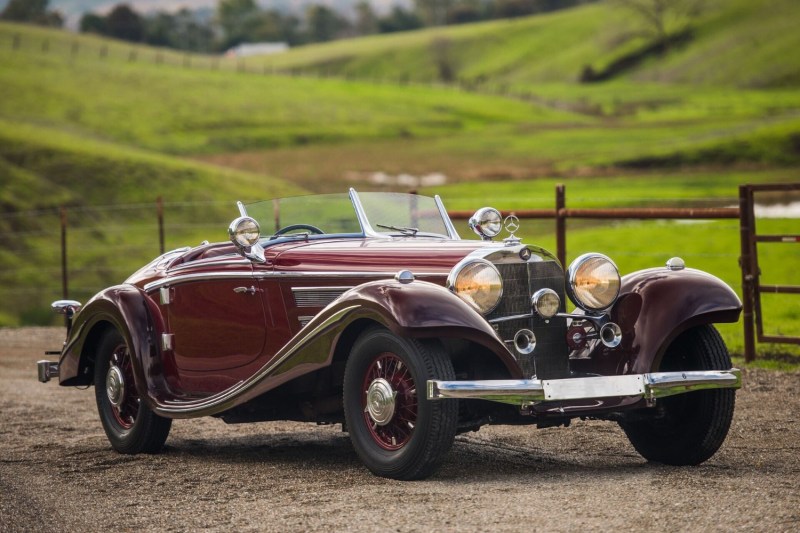
1937 Mercedes-Benz 540 K Special Roadster – $9,905,000
Rarity is always one major point with collectors. Cars that are produced in small numbers will always be rare. Case in point: Only three known Mercedes-Benz 540 K Special Roadsters exist.
That could be why it sold for nearly $10 million. Plus, one of these models was actually owned and originally ordered by the King of Afghanistan in 1937, so it’s truly a vehicle fit for luxury. King Mohammed Zahir Shah, the vehicle’s original owner, is credited with constructing modern roads in the country. One can only imagine what the 540 K Special Roadster would’ve looked like on freshly laid tarmac back then.
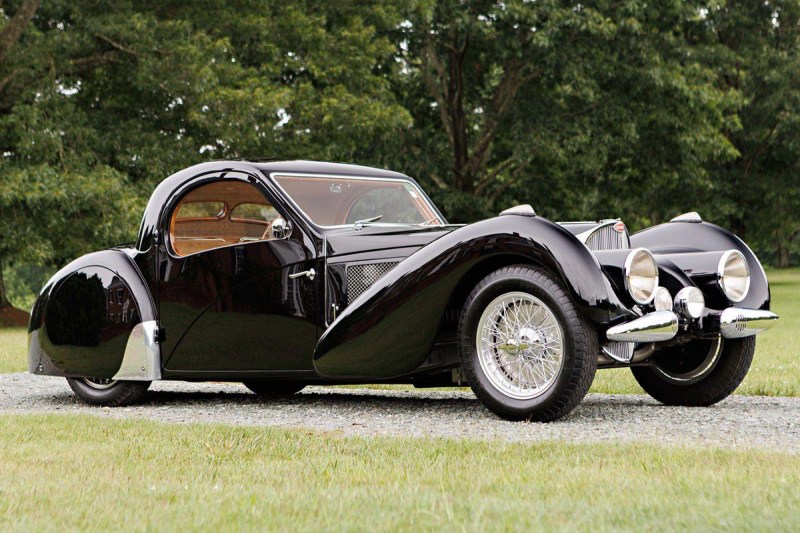
1937 Bugatti Type 57SC Atalante – $10,345,000
Bugatti may be known for its outlandishly priced hypercars with engines that deliver enough performance to power a small city, but the automaker followed a similar formula back in the 1930s. The sultry Type 576SC Atalante pictured is believed to be one of the first 57SCs in existence, as the original owner decided to have Bugatti install a roots-style supercharge shortly after taking delivery of the vehicle.
With the supercharger, the vehicle’s power was bumped up to 200 horsepower, making this one of the fastest and most powerful cars in existence before World War II.
Compared to other 57SC Atalantes, this model has a few unique touches that make it all the more desirable. For example, the gorgeous, fully skirted rear fenders that completely hide the rear tires and large Scintilla headlights showcase Bugatti’s stunning coachwork. This vehicle is one of just 17 models in existence and is an all-original model with a history that can be traced back to its original delivery in Paris in 1937.

1937 Talbot-Lago T-150-C SS Teardrop Coupe – $13,425,000
The Talbot-Lago T-150-C SS Teardrop Coupe is a classic. It’s also one you’ve never heard about because this example is thought to be the only one in existence that has all of its bodywork intact.
The classic features bodywork designed by Figoni et Falaschi. The design firm is believed to have made only 10 to 20 Teardrop Coupes, which were available in the notchback Coupe Jeancart and the fastback Modelé New York. This T-150C-SS is a fastback Modelé New York, one of just two that the company ever built. Talk about rare.
This car has won multiple awards, including First in Class at Pebble Beach and Best of Show at Amelia Island Concours d’Elegance.

2003 Ferrari F2003 GA – $13,400,000
Regardless of how you feel about modern Formula One, there’s no debating that Michael Schumacher is one of the best drivers to have ever raced in the sport.
Most race cars that Schumacher touched turned to gold, but the F2003-GA helped him win the World Championship title for the sixth time. Chassis 229 is claimed to be the most successful of the six F2003-GAs that Ferrari built. The race car was overhauled in 2022 and apparently is in full running order. That means the 3.0-liter V10 engine is ready to hit the track again.

1955 Ferrari 410 Sport Spider – $22,005,000
If there’s one car on this list that will make you go weak in the knees, it’s the Ferrari 410 Sport Spider. We could fill an entire page with all of the details that make this car so special. One of the major reasons is its stunning design, which Sergio Scaglietti created. This is one of the few Ferrari models to feature coachwork that Scaglietti designed and built.
The 410 Sport Spider’s 4.9-liter V2 engine is also drool-worthy. This car is one of just two factory-campaigned 410 Sport models to come with the 12-cylinder engine. This exact 410 Sport Spider was driven by Carroll Shelby and Juan Manuel Fangio. Shelby’s career with the Ferrari was especially noteworthy, as he won eight races and had ten podium finishes behind the wheel of chassis number 0589 CM.

1955 Mercedes-Benz SLR ‘Uhlenhaut Coupé’ – $146,588,400
The 1955 Mercedes-Benz SLR “Uhlenhaut Coupé” sold for an incredible amount of money. In fact, if you add up the other nine vehicles on this list, you’ll still come up short on what someone spent on this car — but what a car to spend that kind of money on.
For Mercedes-Benz fans, the SLR “Uhlenhaut Coupé” is one of the most historic models ever built. It’s one of just two vehicles that were built based on the race-ready 300 SLR, and it was created by legendary designer Rudolf Uhlenhaut. Beyond its masterclass design, the “Uhlenhaut Coupé” was one of the fastest cars in the world at its time, able to hit a top speed of 180 mph.
The history behind this car is truly mesmerizing, but it is worth its obscene price tag because Mercedes-Benz had held onto the “Uhlenhaut Coupé” since it was new. So when it came up for sale, it was the first time in the car’s history that it sold to a real owner.

What are 5 of the cheapest collector cars in the world?
These are five of the cheapest collector cars in the world that you can get your hands on if you have the money and a keen eye:
- Volkswagen Beetle (Type 1): Everyone knows about the iconic Volkswagen Beetle, also known as the Type 1, but few realize that it is often considered one of the cheapest collector cars in the world. This quirky vehicle was produced from 1938 to 2003. Although not for everyone, the Beetle has a timeless design and a large production volume, which is why it is relatively affordable in the collector car market.
- Chevrolet Camaro (First Generation): Similar to the Ford Mustang, the first-generation Chevrolet Camaro, manufactured from 1966 to 1969, is a highly sought-after collector car. Since this muscle car is on par with similar Mustang generations and is rare, well-preserved models can demand higher prices. However, luckily for the budget collector, average-condition Camaros from this era can still be found at reasonable prices. This makes them an attractive option for collectors who want a project car or are beginning their foray into collecting.
- Ford Mustang (First Generation): The first-generation Ford Mustang, produced from 1964 to 1973, is another classic collector car that can be found at fairly affordable prices if you know where to look. Its popularity and the significant number of units produced contribute to its affordability, especially for the base models with smaller engines. If you’re after one with a larger engine, you should expect to pay far more.
- Datsun 240Z: The Datsun 240Z, which was produced from 1969 to 1973, is a Japanese powerhouse often considered a budget-friendly collector car. This sports car gained popularity for its sleek design, reliable performance, and performance capabilities. While prices for pristine examples have risen in recent years, there are still opportunities to find reasonably priced 240Zs in good condition.
- Triumph Spitfire: The Triumph Spitfire, a compact British sports car produced from 1962 to 1980, offers an affordable entry for those who want to own a piece of British automotive history. With its distinctive design and lightweight construction, the Spitfire provides an enjoyable driving experience and can be acquired at relatively low prices, particularly the early models. Thus, it’s easier to find, and if pristine or restored correctly, is a dream to drive.
Although each is a budget-friendly model for most car collectors, you should note that prices can vary significantly depending on the condition, rarity, and location.
Our suggestions are based on general trends and aren’t necessarily true for every region. That’s why it’s always recommended to thoroughly research and consult with experts before making any purchasing decisions in the collector car market. Additionally, if you have the money and keep an eye out, you might come across one of the 10 most expensive and sought-after collector cars we spoke about earlier.
